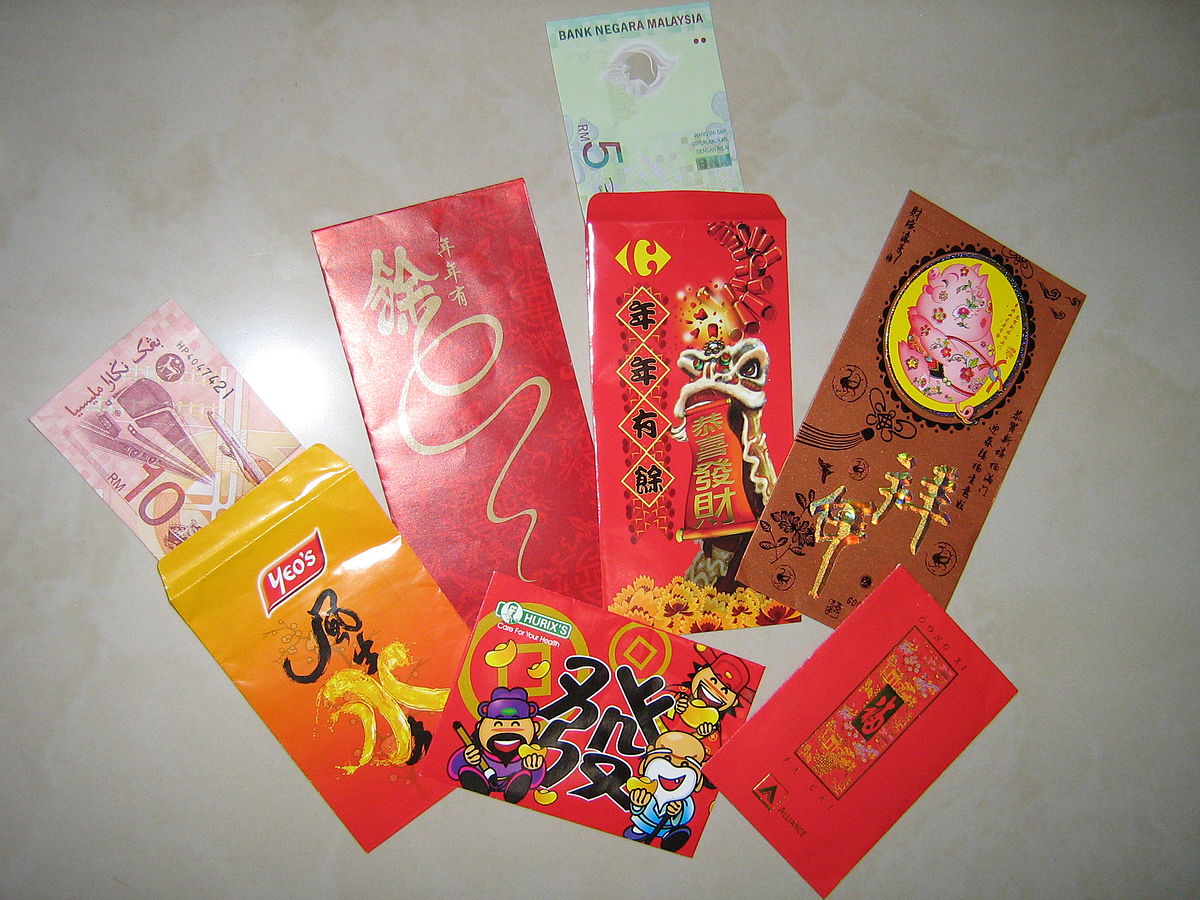
en.wikipedia.org
A
red envelope,
red packet or
red pocket (
simplified Chinese: 红包;
traditional Chinese: 紅包;
pinyin:
hóngbāo;
Pe̍h-ōe-jī:
Âng-pau) is a monetary gift given during holidays or for special occasions such as a wedding, a graduation, or the birth of a baby.
[1] Although the red envelope is from
Chinese traditions, other cultures also share similar traditional customs. The red packet is also called "money warding off old age" (
壓歲錢;
yāsuì qián) for
Chinese New Year.
These customs have also been adopted across parts of Southeast Asia, and other countries that have a sizable ethnic
Chinese population as well. In the mid-2010's, a digital equivalent to the practice emerged within
messaging apps with
mobile wallet systems localised for
Chinese New Year.
...
Red envelopes, more commonly known as Hong Bao (in
Mandarin) or Lai See (in
Cantonese), are gifts presented at social and family gatherings such as
weddings or holidays such as
Chinese New Year. The
red color of the
envelope symbolizes
good luck and is a symbol to ward off evil spirits.
[2] It is also gifted when a person is visiting as a gesture of kindness for visiting. The act of requesting red packets is normally called
tao hongbao (
Chinese: 討紅包;
pinyin:
tǎo hóngbāo) or
yao lishi (Chinese: 要利是; pinyin:
yào lì shì), and, in the south of China,
dou li shi (Chinese: 逗利是; pinyin:
dòu lì shì; Cantonese Yale:
dau6 lai6 si6). Red envelopes are usually given out to the younger generation who are normally still in school or unmarried.
[3]

